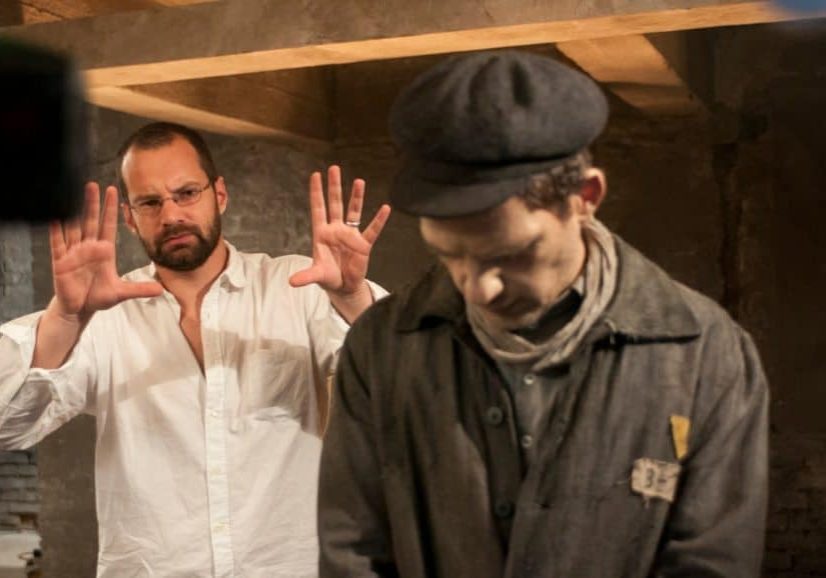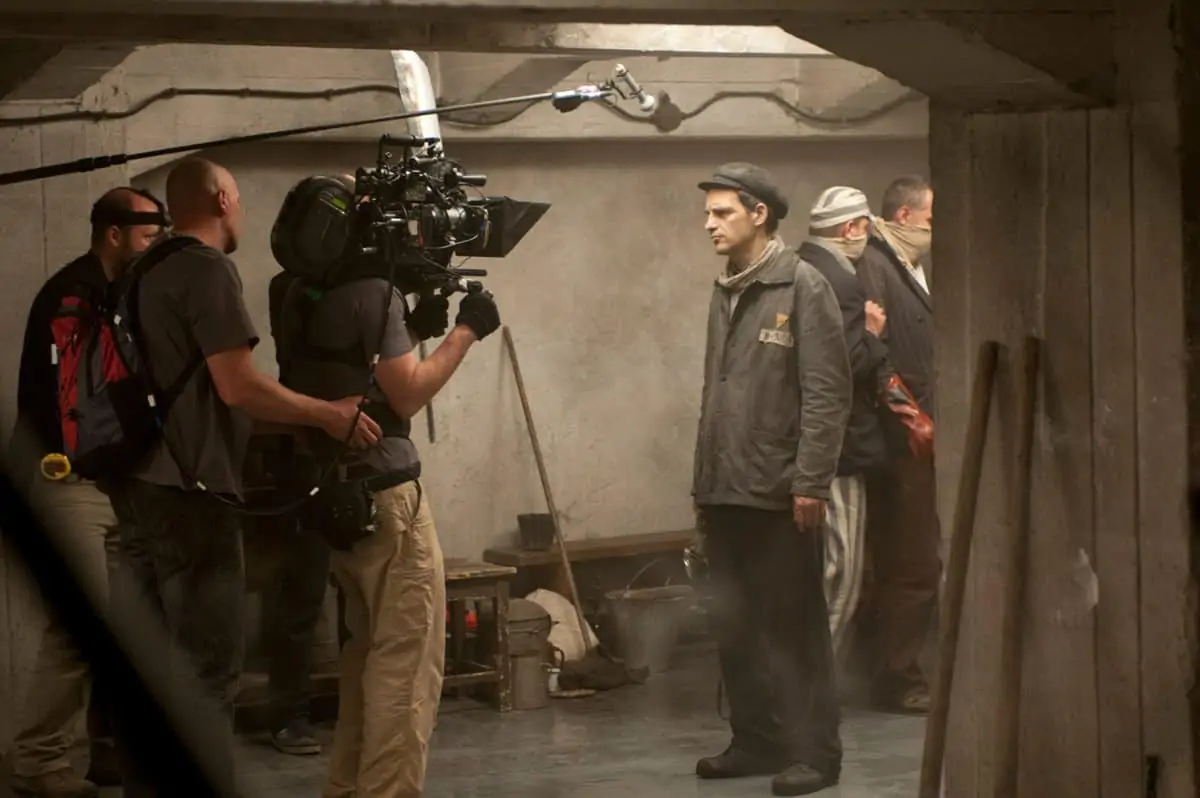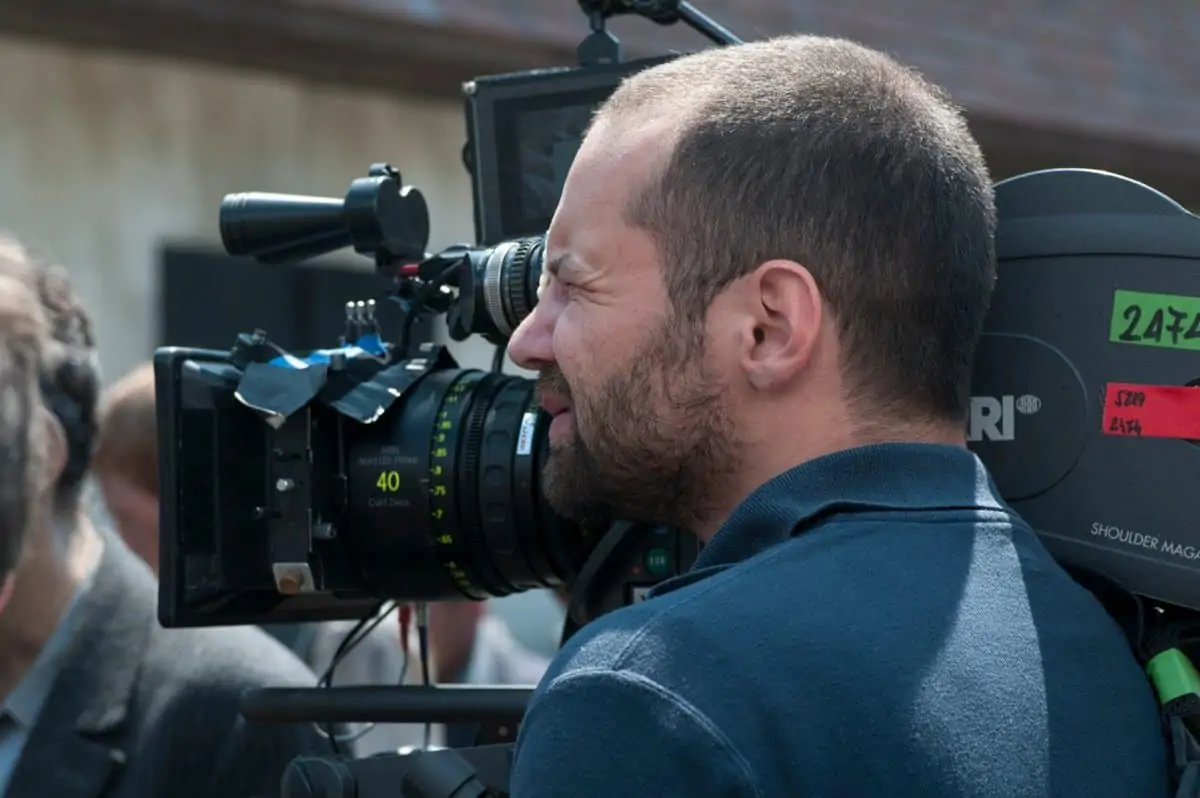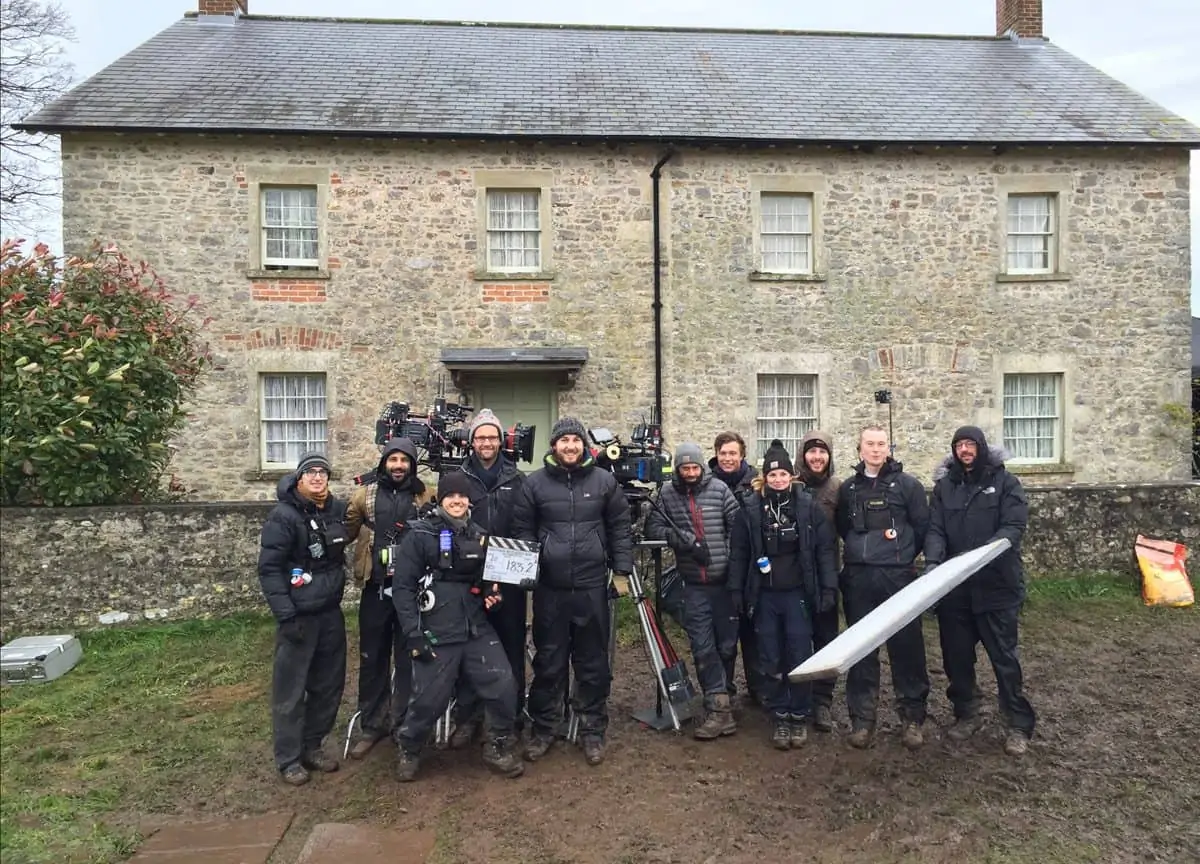Heart of Darkness
Mátyás Erdély HSC / Son Of Saul

Heart of Darkness
Mátyás Erdély HSC / Son Of Saul
BY: Kevin Hilton
Filmmakers always face a dilemma in showing the unshowable, especially if it is central to the story and the motivations of the characters. Set amid the horrors of the Auschwitz-Birkenau death camp in 1944, the critically acclaimed and Oscar-winning Hungarian film Son Of Saul does not shy away from the enormity of what is happening, but uses the situation as an horrific backdrop, instead focusing almost exclusively on the main character's face and emotions.
When he came to shoot the film, cinematographer Mátyás Erdély found that he was not entirely unfamiliar with the approach director László Nemes wanted to take. The two had worked together previously on three short films, the first of which, With A Little Patience (2007), laid down the grammar and technique for Neme's feature debut. Not that Erdély was aware of this at the time: "Without my knowing, that film was a study of the language of Son Of Saul. It's a less sophisticated version and is basically a one-shot short with a lot of camera movement, but it does have many aspects we used later."
The centre of the film is Saul Ausländer (played by Géza Röhrig), a Hungarian Jewish man who works with the Sonderkommando, a supposedly privileged and special work group comprising of prisoners that dispose of the bodies of those slaughtered in the gas chambers. After he finds the body of a young boy who he thinks is his son, Saul is driven to search for a rabbi in the camp to conduct a formal funeral.
During this quest the camera stays with Saul in close-up for almost the duration, only occasionally breaking away to focus on other characters or incidents. Life and death go on around him, with gruesome shown almost fleetingly in the background or at the edges of the frame. This was the way Erdély and Nemes got round the challenge of "how to show what cannot be shown", which the cinematographer says is one of the important ideas behind the film. "The concept was to limit the amount of information reaching the audience while still giving them the story," he explains.
The camera is used, Erdély says, in such a way as to show only the essentials needed to tell the story: "Nothing is there as ornament. We sat down with a list of things we wanted to do and what we didn't want to do. We had different rules for ourselves and we stuck to them. It was very extreme."

Among these stipulations was the imperative to keep the physical horrors of the Holocaust at a distance. "We had been thinking about the story idea and approach for many years and we had planned the dogma for ourselves," Erdély says. "About a year and a half before shooting started we began to think about how to tackle a film that takes place in a concentration camp. Eventually we thought about what the experience would be like for the audience if we made all the backgrounds out of focus."
Prior to filming Erdély and the crew tested different lenses, focal lengths and ways to move the camera. An initial rule had been to have no handheld shots, which he says had become a cliché. The thought then turned to Steadicam but not as it is today, rather what Erdély describes as "an older, not so perfect version", which would add to the feel of the film. But after talking to Garrett Brown it became clear that such a Steadicam did not exist.
Perhaps reluctantly Erdély ended up using handheld cameras mounted on the shoulder. The ARRICAM LT was chosen because it is light and also has audio capability. "I knew we wanted to record sound as much as possible," Erdély comments. "But we also needed something smaller than the LT for whenever the weight got too much. The ARRIFLEX 235 has more mobility and I used it whenever I could convince László that we didn't need sound." Son Of Saul was shot on 35mm four-perf Kodak Vision3 500T 5219 film stock using Zeiss Master Prime lenses.
Cinematographers always have to consider how they are going to work with the actors and how the actors are going to work with them. But in this case the use of extreme close-up was going to make the way this relationship worked even more critical.
"We did some tests before the shoot because the actor playing Saul had to get used to the fact that the camera would be so close to him," Erdély says. "My crew consisted of four to five people, including the focus puller and boom operator and he had to get used to that."

To emphasise this the first shot on the first day of filming was the opening sequence of the finished production, with the camera fully on Géza Röhrig's face as Saul works in the gas chamber.
"It was like laying down the rules that he had to live with," Erdély comments. "But Géza is extremely intelligent and he understood how it was going to be. He and I had to pay a lot of attention to each other and ended up doing a dance together as we moved through the scenes. The whole film was shot over 28 days and all that time I was anticipating him, reacting to his movements."
Nemes and Erdély wanted a raw look to the film, with no artificial light for the daytime exteriors, and harsh lighting in the interior scenes. "Our approach was to be very brutal with the lights," Erdély says. "It's not a pretty movie in any way. For the rooms near the gas chamber there was industrial lighting and then more practical light in the offices. The living quarters had the most individual look because the people were creating their own spaces. Overall we used a mixture of HMIs, Kinoflos, tungsten and LEDs."
The filmmakers used two seminal films, both from 1985, as references: Elem Klimov's Come And See, shot by Aleksei Rodionov; and the Franco-British documentary about the Holocaust in Poland, Shoah, directed by Claude Lanzmann. While both were an influence Mátyás Erdély says the aim was not to make Son Of Saul like them. He and Nemes appear to have achieved their goal as their film is being hailed by critics as something every much of itself. Indeed, along with wins for the production at Cannes in 2015, and best foreign language film at this year’s Oscar and Golden Globes, it has also earned Erdély recognition at the world’s leading cinematography events, with a Golden Camera 300 at the Brothers Manaki International Film Festival and a Bronze Frog from Camerimage.



